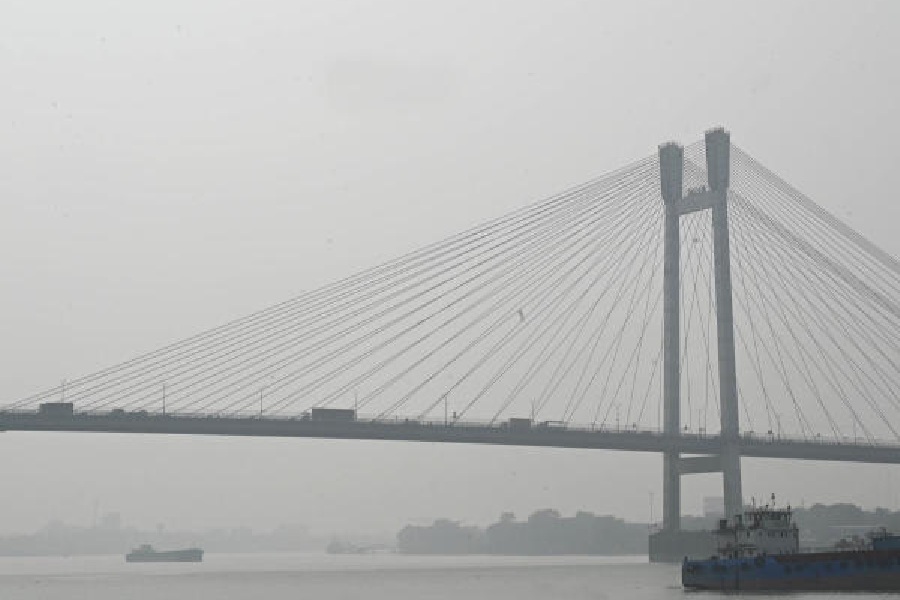Two out of seven monitoring stations in Kolkata recorded “poor” air at midnight on Sunday as the city welcomed the New Year with fireworks and loud music.
The remaining five stations reported “moderate” air quality.
Data shows the city’s air quality in general on New Year’s Eve was better than what was recorded the same night in 2022.
The stations that recorded “poor” air are in Ballygunge and Jadavpur. The ones that recorded “moderate” air quality are in Bidhannagar, Rabindra Bharati University (BT Road campus), Rabindra Sarobar, Victoria Memorial and Fort William.
According to the National Air Quality Index, prolonged exposure to “moderate”
air can cause “breathing discomfort to the people with lungs, asthma and heart diseases”. “Poor” air can cause “breathing discomfort to most people on prolonged exposure”.
An official of the state pollution control board (PCB) said the comparatively warm weather on December 31 helped in dispersal of the pollutants.
“There was also a fair wind speed that further helped in dispersal of the pollutants,” the official said.
According to the Alipore Met office, the minimum temperature on Monday was 16.2 degrees Celsius, two notches above normal.
The minimum temperature is recorded early in the morning and indicates the temperature in the preceding night.
A warmer weather means the air rises to a greater height above the ground than what happens when the weather is cold. The air, while it rises, carries away the pollutants.
A higher wind speed also ensures that the pollutants are dispersed, said scientists. That is why the air quality is generally better during summer, despite the volume of pollutants released in the air remaining the same.During the monsoon, rain washes away the pollutants.
The air quality on Sunday midnight was much better than the quality of the air on the midnight of December 31, 2022.
Last year on New Year’s Eve, the monitoring stations in Ballygunge, Jadavpur and Rabindra Sarobar recorded “poor” air. The stations in Bidhannagar, Rabindra Bharati University and Victoria Memorial recorded “very poor” air and the station in Fort William reported “moderate” air.
“Very poor” air quality can lead to “respiratory illness on prolonged exposure”, says the National Air Quality Index.
The PCB official said several steps such as watering roads (so dust does not rise) and asking developers to keep construction sites covered (to prevent dispersion of dust particles) have also helped.
Road dust as well as dust particles produced at construction and demolition sites are a major contributor to PM2.5 and PM10, said a scientist.
PM2.5 refers to particulate matters less than 2.5 microns in size, while particulate matters that are between 2.5 and 10 microns in size are called PM10.
PM2.5 can enter the bloodstream and hit any organ, said scientists.
The dust rising from construction and demolition sites are soil particles, sand particles and particles of cement and others. These have high concentrations of calcium, iron and silicon, all of which are toxic. They are harmful to breathe in.
